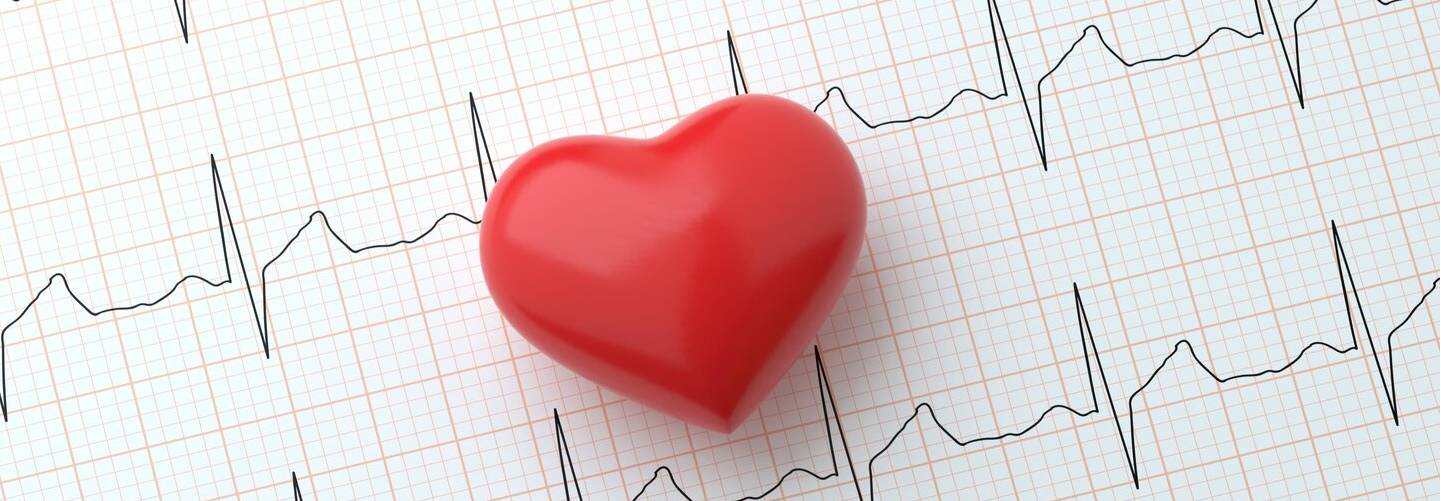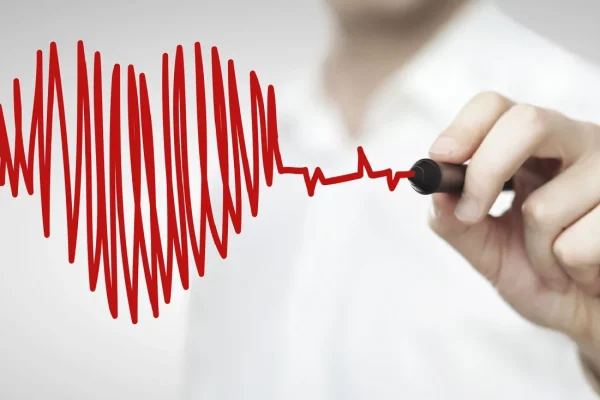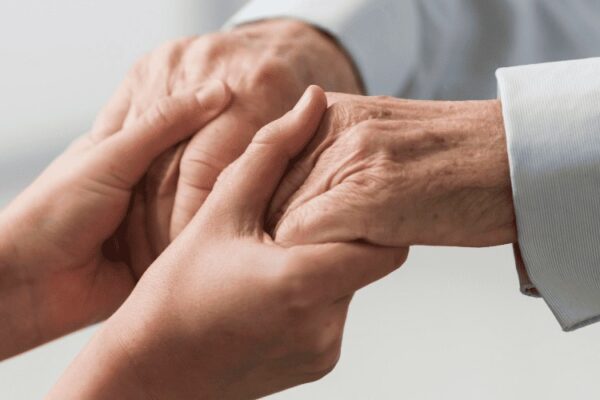
25 Feb Not Quite My Tempo: A Guide to Arrhythmia
Not Quite My Tempo: A Guide to Arrhythmia
By Island Hospital | Feb 26, 2024 4:22:51 PM
Have you ever experienced continuous heart palpitations? This could be caused by arrhythmia, a problem with the rhythm of your heart.
Think of your heart as a drummer. It works non-stop to provide a steady, consistent beat throughout your lifetime. Every beat this drummer hits sends oxygen-rich blood to the rest of your body.
Sometimes, this drummer may skip a beat, drum too fast, or drum too slow. This may create the symptoms of heart palpitations, lightheadedness, or chest pain an individual with arrhythmia feels.
Read our comprehensive guide to learn more about arrhythmia, the factors which cause it, and the available treatments.
What is Arrhythmia?
Our heart is a rather simple organ in its function. It receives blood on the right side, pumps that blood to the lungs (to pick up oxygen and deposit carbon dioxide), then receives the oxygen-rich blood on the left side to pump it to the rest of the body.
This entire process is regulated not by willpower, or your brain, or your body for that matter.
The heart has its own electric impulses that allow it to keep pumping blood non-stop throughout your life.
When the electrical impulses are disrupted, our heart becomes unable to coordinate each heartbeat properly. This results in arrhythmia, where your heart rate is:
- Too fast (tachycardia)
- Too slow (bradycardia)
- Irregular
A healthy heart has a resting heart rate of approximately 60 to 100 beats a minute; any more or less can be classified as too fast or too slow.
Of course, it is normal to develop a faster heart rate after exercise and a slower heart rate during sleep.
Some athletes or physically fit individuals can even develop a heart rate slower than 60. Their heart has adapted to the stress from exercise and training to the point it can circulate blood at greater efficiency and with fewer contractions.
Hence, not all cases of a fast or slow heartbeat can be arrhythmia. Whether the arrhythmia is a problem or not depends on a careful study of the patient’s electrocardiogram (ECG).
Symptoms of Arrhythmia
As written above, arrhythmia symptoms are often noticed when you experience a faster or heavier heart rate during a period of rest.
However, not all cases of arrhythmia are synonymous with an increased heart rate. Some individuals with arrhythmia experience different symptoms such as:
- Strong or fast heart palpitations felt on the chest
- Fatigue
- Light-headedness/dizziness/fainting episodes
- Sweating
- Feeling like you are about to faint
- Shortness of breath
- Chest pain
Types of Arrhythmia
Arrhythmias are classified according to where they originate and also by the speed of the heart rate.
Our heart is divided into four chambers; the two upper chambers are the atria and the two lower chambers are the ventricles.
Apart from identifying the speed of the heartbeat, doctors will also look to identify which part of the heart is causing the arrhythmia.
Going Too Fast – Tachycardia in the Upper Chambers
Atrial Fibrillation
An atrial fibrillation (AFib or AF) occurs when the electrical impulses in the upper chambers go out of control.
In most cases, patients have described an irregular or rapid heartbeat accompanied by a feeling of dizziness and shortness of breath.
AFs usually begin as a short period of irregular heartbeats, which may then last longer or become continuous over time. Some are temporary, but some become persistent and require treatment.
Regardless of the duration, atrial fibrillation is a dangerous condition. It can increase the risk of a blood clot forming in the heart or in an artery leading to the brain, which can lead to a heart attack or stroke.
Untreated atrial fibrillation doubles the risk of heart disease and increases the risk of a stroke by 5-fold.
Atrial Flutter
An atrial flutter is similar to an atrial fibrillation; it is a disorder in the upper chamber that causes the heart to beat too fast.
Unlike the atrial fibrillation’s chaotic signals, an atrial flutter has a more organised heart rhythm. The heart beats in a regular rhythm but is noticeably faster than a normal heart rate.
Because the heartbeat is more organised, a person with atrial flutter may not have symptoms. However, atrial flutter can still lead to serious complications such as a heart attack or stroke.
Wolff-Parkinson-White Syndrome (WPW)
The WPW syndrome is a rare condition that is present at birth. People with WPW have an extra electrical pathway in the heart that causes short circuits and rapid heartbeats.
The fast heartbeats are not life-threatening, but can still contribute to heart complications in the long-run.
Because this condition is present at birth, even infants can experience sudden periods of increased heartbeat. Signs to look out for in infants are:
- Gray or blueish skin color
- Poor eating or lack of appetite
- Heavy sweating
- Restlessness
- Rapid breathing
Going Too Fast – Tachycardia in the Lower Chamber
Ventricular Tachycardia
A rapid heart rate originating from the lower chambers is known as ventricular tachycardia.
Because the heart is beating too fast, the lower chambers do not contract efficiently and pump insufficient blood to the rest of the body.
Ventricular tachycardia is usually a serious problem. Individuals with a weak heart, heart disease or other medical complications may develop serious complications.
In some cases, a ventricular tachycardia can even lead to a more dangerous form of arrhythmia, known as a ventricular fibrillation (V-fib).
Ventricular Fibrillation
The ventricular fibrillation (V-fib) is the most serious form of arrhythmia, as it causes the lower chambers to quiver instead of pumping blood properly.
This cuts off blood supply to the rest of the body, causes your blood pressure to drop rapidly and causes a sudden cardiac arrest.
A V-fib is life threatening and a regular heart rhythm must be restored immediately via emergency treatments such as CPR (cardiopulmonary resuscitation) or using an AED (automated external defibrillator).
Most cases of ventricular fibrillation occur in people whose hearts have sustained damage from previous heart attack or heart complications.
Going Too Slow – Bradycardia in the Heart
The sinus node is the pacemaker of the heart, controlling the impulses and rhythm of our heartbeats.
If the sinus doesn’t work properly, it can be due to the sick sinus syndrome. Your heart rate will alternate between too slow or too fast as a result of improper control.
Sick sinus syndrome is more common in older adults, due to scarring or tissue damage of the heart as a result of old age or a previous heart attack.
Heart Block
When a heart block (atrioventricular block) occurs, the electrical signals from the atria don’t reach the ventricles completely.
A minor block usually causes a slow signal/heart rate, but rarely causes symptoms and does not require medical attention.
A second-degree block is akin to interrupting a drummer while he is playing, the beats are dropped and your heart rate becomes irregular because not all the signals are reaching the lower chambers.
The third-degree block completely shuts off the lower chambers from receiving the electric impulses. A natural pacemaker will kick in to control the heart rate when this happens, but the heart rate becomes unreliably slow.
What Contributes to Arrhythmia?
Age
As with many other diseases, age is a contributing factor to arrhythmia, particularly bradycardias.
A damaged heart
A prior heart attack, existing heart disease or damage to the heart due to old age and scarring is a common risk factor and cause of irregular heartbeats.
Risk factors that increase your risk of heart diseases also contribute to your risk of arrhythmia, namely:
- Smoking
- Drinking too much alcohol
- Recreational drugs
- Psychological stress and anxiety
- Genetics
Diabetes
Often called the “mother of all diseases”, uncontrolled diabetes causes damage to the heart vessels and nerves. This increases your risk of high blood pressure, heart attacks and of course, arrhythmias.
Thyroid problems
If you are an individual with known thyroid conditions, you may be at a higher risk of arrhythmias.
Monitor Your Heartbeat
Arrhythmias are usually discovered during heart-monitoring tests, such as an ECG (Electrocardiogram) and Holter monitoring.
If you are at higher risk of arrthythmia due to old age, heart damage or you have a family history of heart complications.
Consider getting heart-monitoring tests done during your yearly check-up or health screening.
Some arrhythmias are triggered in response to physical activity, so getting a stress test is also a way to check for an irregular heartbeat.
Treatment for Arrhythmia?
Symptomatic and slow heartbeats are often treated with a pacemaker as there aren’t any medications that can speed your heart up.
The pacemaker will be implanted near your collarbone, connected to your heart. The moment your heart rate drops below a certain speed or stops, the pacemaker will send out electric impulses to help the heart beat steadily.
Slowing down the speeder
Tachycardias are treated with medication that control or restore the heart’s rhythm; these medications must be taken on time and following the doctor’s instructions to avoid complications.
Another way to treat tachycardias is through a catheter ablation, where the doctor uses extreme heat or cold to damage a part of your heart.
This intentional scarring causes a block along the pathway in your heart that’s causing the arrhythmia.
Catheter ablation is done using electrodes inserted into the heart, so there is no need to worry about any damage outside of the heart.
For people with V-fib and ventricular tachycardia
If you are at a higher risk of developing extremely fast or irregular heartbeats (especially for V-fibs) that can cause a sudden heart attack, our doctors may recommend an ICD (Implantable cardioverter-defibrillator) instead.
Similar to a pacemaker, the ICD will send electric shocks to reset the heart when it detects an abnormal heart rhythm.
For people with A-fib
Because atrial fibrillation can cause blood clots, doctors often prescribe blood thinners to help reduce the risk of a blood clot forming. This is done to reduce the risk of a stroke occurring.
What about surgery?
Surgery to correct arrhythmias is often reserved for people who don’t respond to other treatments, or if you already require heart surgery for a different condition. It is, however; an effective way to treat arrhythmias.
The maze procedure is a surgery that creates a pattern or “maze” of scar tissues in the heart to block off the pathways that cause arrhythmia, similar to catheter ablation.
Because scar tissues cannot conduct electricity, the blockage helps to block stray signals and prevent arrhythmia.
Coronary bypass surgery is not reserved only to bypass heart blockages, but it can also be used to improve the blood supply to your heart and reduce the risk of an arrhythmia or heart complication.
Key Takeaways
The healthier your heart, the lower your risk of arrhythmia. Adopt a heart-healthy lifestyle for the sake of your overall well-being.
Invest in healthy habits such as exercising regularly, eating a balanced diet, maintaining a healthy weight, and controlling blood pressure and cholesterol.
This also applies to individuals who have suffered from heart damage. Although you are unable to reverse the damage, you can still prevent your condition from worsening.
Another great way to keep your health in check is through regular health screenings.
For a comprehensive assessment, Island Hospital offers a Cardiac Arrhythmia Health Screening Package. This screening includes all the necessary assessments to evaluate your cardiovascular well-being.
We hope this guide provided valuable insights into arrhythmia. Help your little drummer play the best tempo, as it works non-stop to keep you alive.
Schedule an Appointment with our Cardiology Specialists today!







